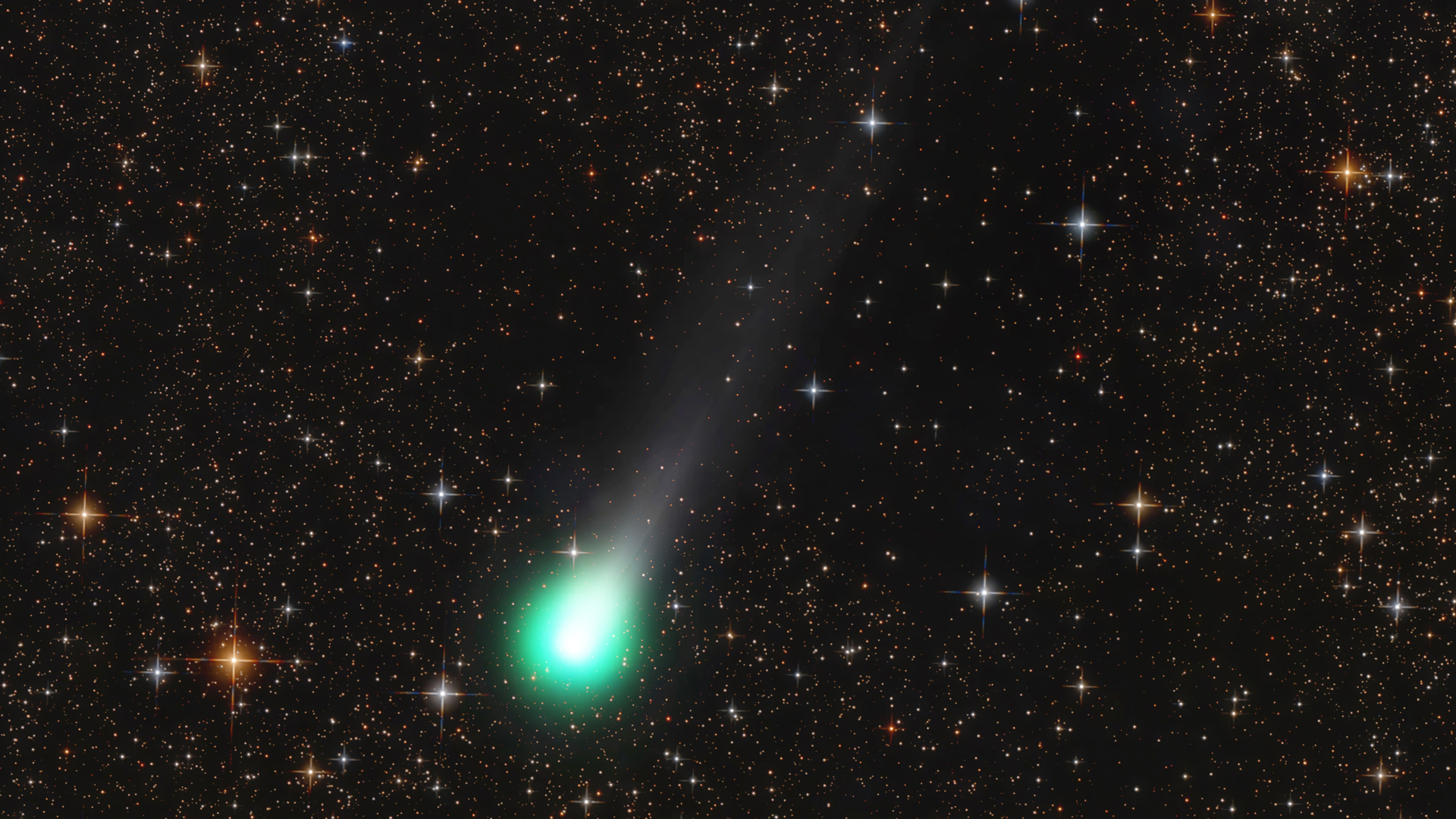Exposed planetary core spotted circling distant star

Astronomers have spotted the exposed core of a massive alien world, an unprecedented find that could shed considerable light on planet formation, evolution and diversity.
The planetary core, called TOI-849b, is unlike anything scientists have seen before, and it could hide a wealth of exciting information in its bizarre depths, researchers say.
"The discovery of this planet shows that planet formation and evolution proceeds in unusual ways not anticipated from studying the solar system," David Armstrong, the lead author of a new study reporting the discovery of TOI-849b, told Space.com via email.
"There is a huge range and diversity of planets out there, with more found every week, and if anything is becoming clear it is that we should not be surprised at strange new discoveries," said Armstrong, a researcher in the physics department at the University of Warwick in England. "With luck, the new understanding of planet formation planets like TOI-849b can open up will help us understand how our own solar system formed."
Related: The strangest alien planets we know
TOI-849b was detected by NASA's Transiting Exoplanet Survey Satellite (TESS), which launched to Earth orbit in April 2018 and has discovered more than 50 alien worlds to date, along with more than 2,000 still-unconfirmed candidates. ("TOI" stands for "TESS object of interest.") As its name suggests, TESS hunts for alien worlds using the "transit method," meaning it watches for tiny but telltale dips in the brightness of stars created by orbiting planets traveling across their faces.
The TESS observations revealed that TOI-849b lies extremely close to its host star, completing one lap every 18 hours. This orbital region is known as the "Neptunian desert," because Neptune-size worlds are very rare there. The newfound object is Neptune-size, the TESS data shows, but it's far from Neptune-like.
Breaking space news, the latest updates on rocket launches, skywatching events and more!
Neptune is quite cold, for starters. And TOI-849b's surface temperature is likely around 2,780 degrees Fahrenheit (1,530 degrees Celsius), Armstrong and his colleagues determined.
The researchers also studied the object using the High Accuracy Radial velocity Planet Searcher (HARPS), an instrument installed on a telescope at the European Southern Observatory’s La Silla Observatory in Chile. HARPS and similar spectrographs allow scientists to track the motions of stars precisely, revealing how much they're tugged to and fro by the gravitational pull of their orbiting planets.
The HARPS data suggests that TOI-849b is two to three times more massive than Neptune, which itself is 17 times heftier than Earth.
"TOI 849 b is the most massive terrestrial planet — that has an Earth-like density — discovered," Armstrong said in a statement.
"We would expect a planet this massive to have accreted large quantities of hydrogen and helium when it formed, growing into something similar to Jupiter. The fact that we don’t see those gases lets us know this is an exposed planetary core," he added. "This is the first time that we’ve discovered an intact exposed core of a gas giant around a star."
It's unclear how TOI-849b arrived at this rather bizarre evolutionary point. Is it a former gas giant that lost its atmosphere after venturing too close to its host star, say, or slamming into another planet? (Stellar radiation at TOI-849b's orbital location, while intense, is not nearly powerful enough to strip away a gas-giant atmosphere entirely, the researchers said.) Or did TOI-849b never accrete enough gas to become a Jupiter-like world?
"This is a mystery, and a great question," Armstrong told Space.com. "I think the key clue is that TOI-849b lies in the Neptunian desert, which hints at a rare history. That suggests to me one of the more unusual or aggressive pathways, perhaps tidal disruption or an impact during the formation process, but we need more study to be sure."
Though TOI-849b is the first object of its kind ever spotted around another star, our own solar system may host something similar: the weird metallic asteroid Psyche, which some scientists think is the exposed core of a Mars-size planet.
We'll learn a lot more about Psyche in the relatively near future. NASA is developing a mission, also called Psyche, that is scheduled to launch in August 2022 and arrive at the 140-mile-wide (226 kilometers) asteroid in 2026.
The new study was published online today (July 1) in the journal Nature.
Mike Wall is the author of "Out There" (Grand Central Publishing, 2018; illustrated by Karl Tate), a book about the search for alien life. Follow him on Twitter @michaeldwall. Follow us on Twitter @Spacedotcom or Facebook.

Michael Wall is a Senior Space Writer with Space.com and joined the team in 2010. He primarily covers exoplanets, spaceflight and military space, but has been known to dabble in the space art beat. His book about the search for alien life, "Out There," was published on Nov. 13, 2018. Before becoming a science writer, Michael worked as a herpetologist and wildlife biologist. He has a Ph.D. in evolutionary biology from the University of Sydney, Australia, a bachelor's degree from the University of Arizona, and a graduate certificate in science writing from the University of California, Santa Cruz. To find out what his latest project is, you can follow Michael on Twitter.
